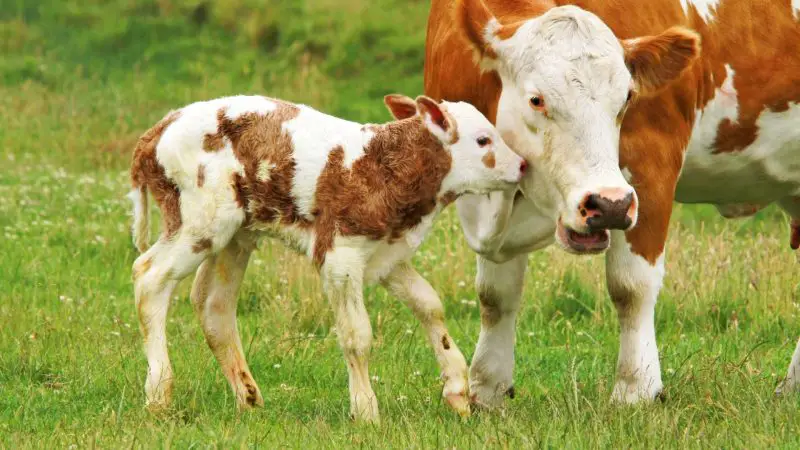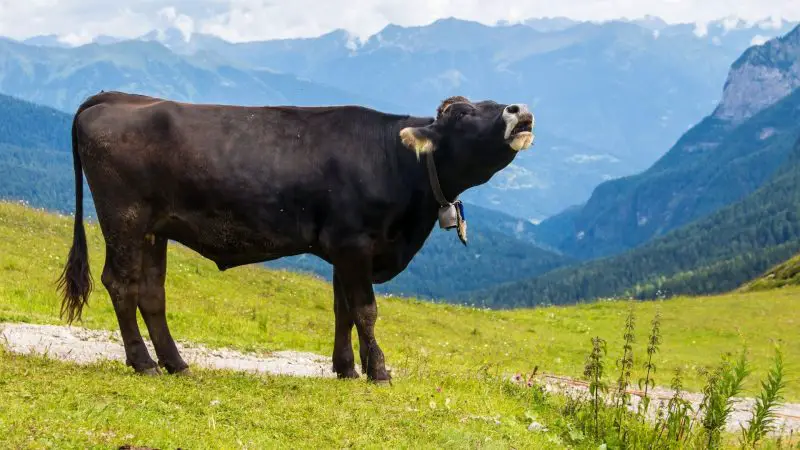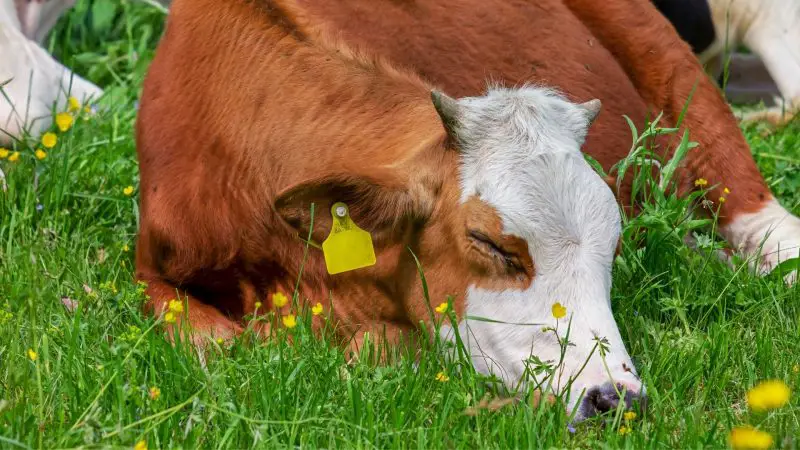Cows are known for being surprisingly smart, docile, and very expressive. Aside from physical stress, these gentle giants also experience emotional stress.
Just like humans, cows can also suffer and feel pain. Cows also feel scared and lonely and have an inherent fear of the unknown.
Do cows cry? Cows cry somehow in the same way as humans. Aside from being intelligent mammals, cows are also known for being social but very emotional mammals and sensitive towards their feelings. They also react positively and show some physical signs if they are happy and excited.
Cattle behavior is more complex than most people think. A better understanding of their changes in behavior is very important, especially if you are into cattle farming.
Why Do Cows Cry?

Cows cry for various reasons, especially when they miss their newborn babies and during hot-iron dehorning, which is a process of removing their horns.
Dehorning of calves is done to prevent horn growth and will reduce the risk of potential injury and bruising to the cows and the people taking care of them.
Likewise, newborn calves also cry once they are separated from their mothers. In almost all commercial dairy farms, workers take the calves away from their mothers only a few hours after they are born.
This is to get milk from the mother for human consumption and to reduce the calf’s dependency on its mother.
Mother cows cry for hours and sometimes, even for days after their calf is taken away. Interestingly, these gentle animals also mourn the death of their young.
However, a study revealed that the early separation of a mother cow and her calf has long-term effects on the calves’ social behavior while they are growing up.
Do Cows Cry at Night?
Cows moo aloud at night and sometimes, it can also be referred to as ‘crying.’ The cows may also cry at night even if their calves are still with them.
Cows mooing at night are a sign that they are hungry or sick, they feel uncomfortable, or they see unfamiliar objects. They also moo to communicate with other cows.
Do Cows Cry Before Slaughter?

Cows don’t cry before slaughter. Currently, there’s no scientific study suggesting that cows cry while they are being brought to a slaughterhouse.
Nevertheless, a pregnant cow in China went viral in January 2020 after it went down on its knees while refusing to be moved to a slaughterhouse.
Can Cows Sense Death?
Currently, no scientific studies are proving that cows can sense death. However, there were reports of cows that have escaped from slaughterhouses.
In January 2016, a cow named Freddie escaped from a slaughterhouse in Queens, New York, just a day before he was scheduled to be slaughtered.
Nonetheless, the most famous cow that has successfully escaped from a slaughterhouse is Emily the Cow.
On November 14, 1995, the three-year-old cow jumped a 5-foot gate of a slaughterhouse in Hopkinton, Massachusetts, a few minutes before slaughter. She later became a representative of animal rights.
Can Cows Feel Emotions?

Cows can feel emotions. In fact, they experience a wide range of emotions such as excitement, loneliness, and fear. Research has shown that cows get excited once they learn how to operate a drinking fountain.
They also love listening to jazz music and may jump in excitement after solving a simple puzzle.
On the other hand, cows also feel lonely once they are separated from their friends. Once they are housed individually, the effect can be seen on their actions.
A study concluded that cows housed in groups have performed better in cognitive ability tests as compared to cows that were alone inside the housing.
Interestingly, another study suggested that a cow’s nasal temperature also shows the changes in their emotions.
Cows may not understand danger but they judge ambiguous stimuli negatively once they are stressed. This is also why farmworkers give cows a sedative and anesthesia during the dehorning procedure.
How Do Cows Cry?

Cows cry by releasing a distinct ‘crying’ sound through high-pitched moos. But sometimes, they also shed tears just like humans when they are crying.
Mother cows and their calves engage in repetitive crying once they are separated from each other. Similarly, male cows (bulls) also cry if they feel stressed out.
When Do Cows Cry?
Cows cry any time of the day when they are scared, in pain, and when they are hungry. They may also cry at night when a predator attacks them. Calves cry for milk, especially when they are separated from their mothers.
Nonetheless, mother cows cry aloud once their calves are missing or taken away from them.
Do Cows Cry Before They Die?
Cows don’t cry before they die or get slaughtered. The cows are smart animals but they have no mental ability to understand that they will be subjected to slaughter.
Cows cry when they are threatened, afraid, alone, in pain, and separated from their calves. In short, cows only cry when they are under stress.
How Do You Humanely Kill a Cow?

There are two main reasons why you need to kill a cow. The first one is when the cow is severely injured or is suffering from an incurable disease.
The second reason is when the cow is already subject to slaughter. But regardless of the reason, you should kill the animal only in the most humane manner.
The process of killing a cow humanely is called euthanasia, also called ‘mercy killing.’ It can be done in three methods – an overdose of a sedative drug such as barbiturate, a gunshot, or by using a captive bolt followed by ‘bleeding out’ or exsanguination.
Here are some tips and steps on how to humanely kill a cow:
How to Humanely Kill a Cow by Drug Overdose?
This process should only be administered by a licensed veterinarian. For human safety, the cow should be retrained properly. The required amount of barbiturates for the intravenous injection should be followed.
How to Humanely Kill a Cow by Gunshot?
This method should only be done by well-trained or experienced people. If possible, do the shooting outdoors. To do this, you may take note of the following:
Step 1: For large cows, use a licensed firearm such as a .357 caliber or 9mm. A .22 caliber bullet may not penetrate the skull consistently.
Step 2: Make sure the animal is calm and well restrained.
Step 3: Check the surroundings and make sure no one will be injured in case of a bullet ricochet.
Step 4: Draw two imaginary lines diagonally (X) from the right horn of the cow to the left eye and from the left horn to the right eye. The center of this ‘X’ mark should be the entry point for the bullet.
Step 5: The bullet should enter the forehead at a 90-degree angle.
Step 6: When using a rifle, it should be 1 – 2 feet from the target. For pistols, the distance should be 2 – 10 inches.
Step 7: To confirm if the cow is dead, there should be no more breathing, heartbeat, and blinking response. Checking should be done at least twice.
How to Humanely Kill a Cow Using a Captive Bolt Gun?
A captive bolt is commonly used for stunning cows before slaughter. Also called a cattle gun, this weapon uses a steel bolt that penetrates the skull, causing the animal to be unconscious before dying.
Therefore, it kills cows without pain and it is safer than a gun. Just make sure you read the manual carefully before using it.
If possible, this process should be done by experienced people. Below are the steps to do this:
Step 1: For adult cows, use a penetrating captive bolt.
Step 2: Ensure that the animal is calm and properly restrained.
Step 3: Draw an “X” just like when using a gun.
Step 4: Use a test stand to check if the velocity of the captive bolt is sufficient. The recommended velocity for stunning a cow is 55 meters per second.
Step 5: Place the captive bolt pistol firmly on the target site, and shoot.
Step 6: Once the cow is down, exsanguinate or bleed out the cow by cutting the carotid arteries and jugular veins in its neck using a sharp skinning knife.
Step 7: Alternatively, inject the cow with potassium chloride. However, this process requires proper training.
Step 8: To confirm if the cow is dead, perform the corneal reflex test by touching the surface of the eyeball several minutes after exsanguination. There should be no reaction.
Summary
Cows give us milk and delicious meat, and as a token of gratitude, you should treat them properly until their death. Therefore, you should understand their way of expressing grief and pain.
And although euthanasia is the most acceptable method of killing cows, make sure you follow all the rules and guidelines.
Related: How Much Does It Cost to Butcher a Cow in the US? | Here’s What to Expect
List of Sources
Euthanasia of Cattle: Practical Considerations and Application
